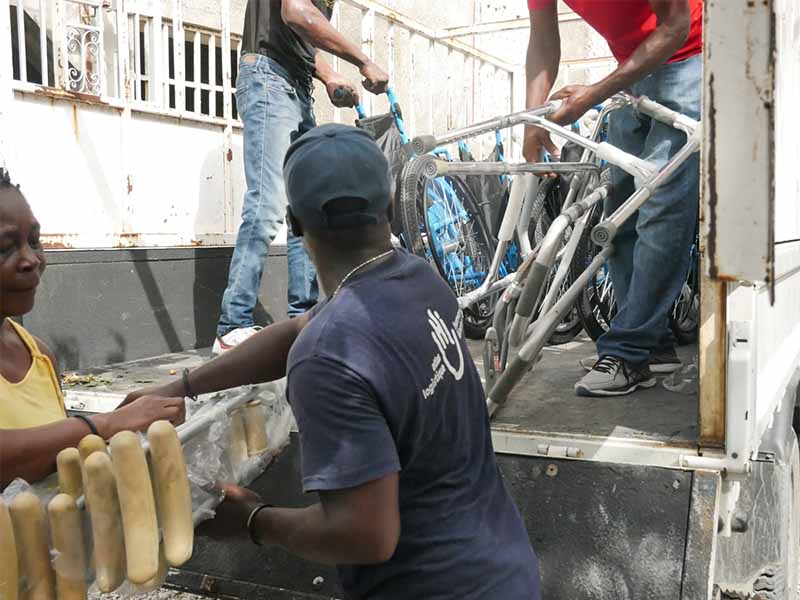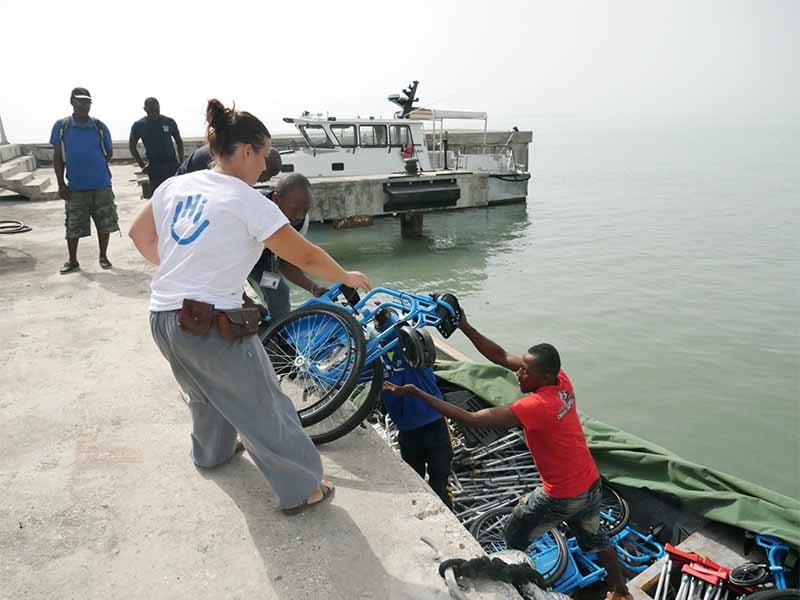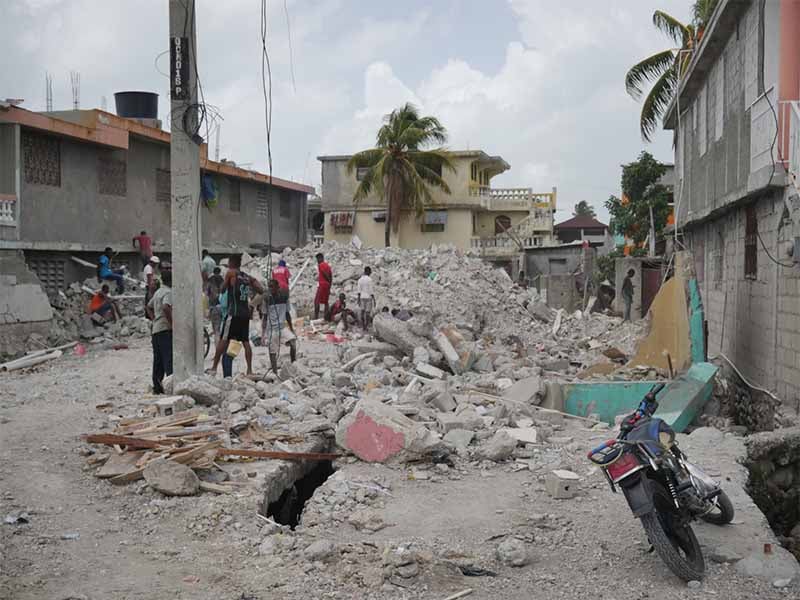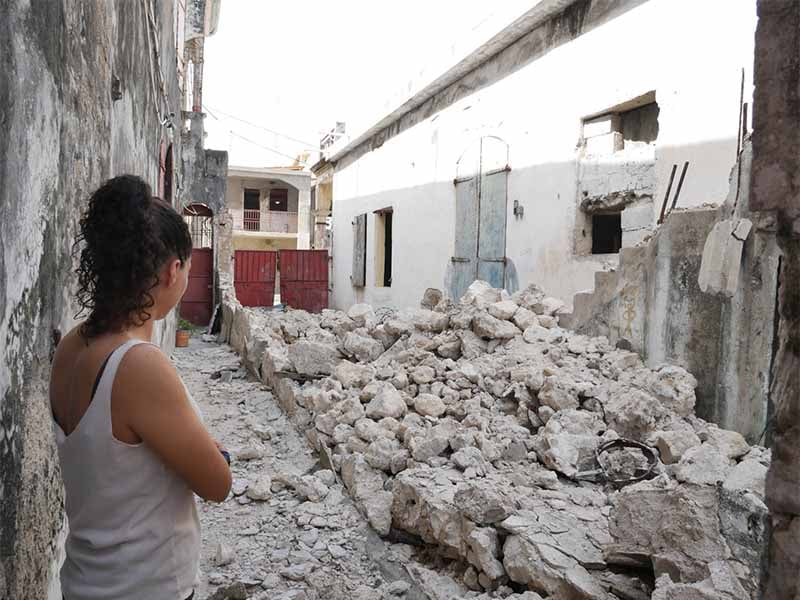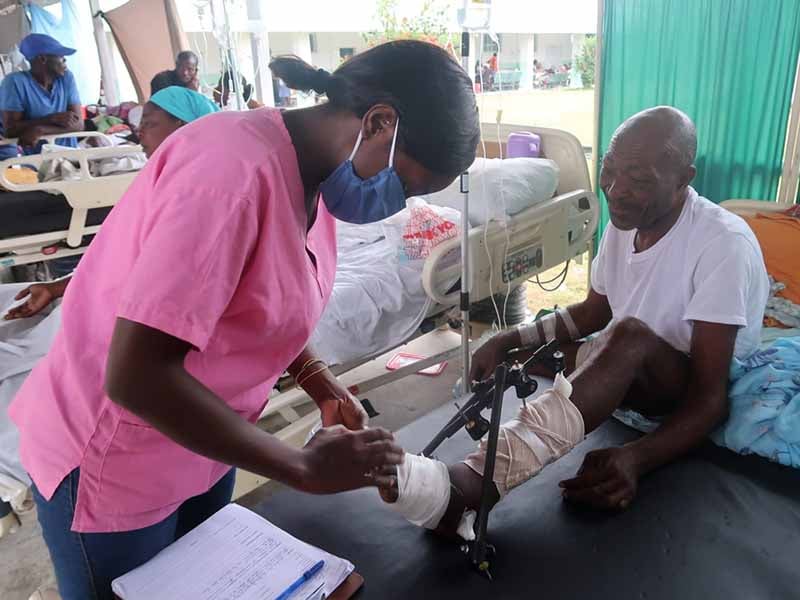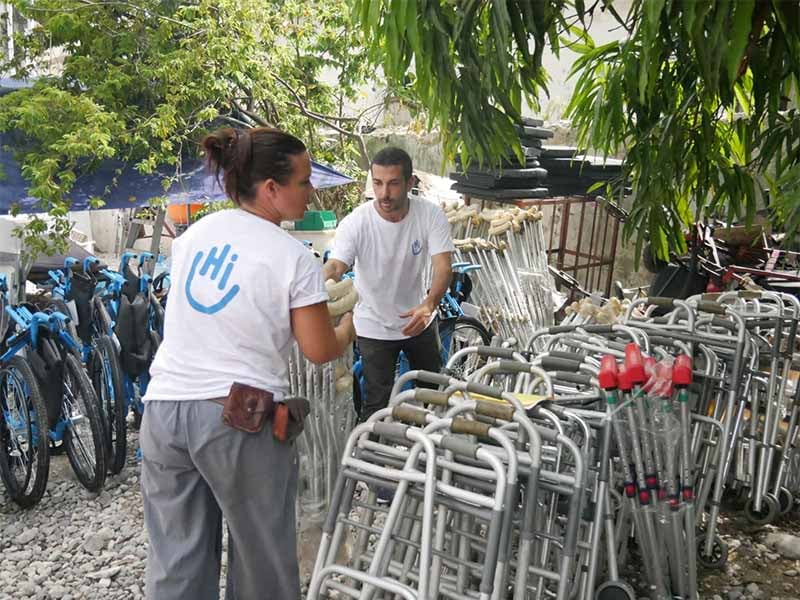REPORT: Explosive ordnance in Syria
One in two people at risk from explosive ordnance contamination
 One in two people in Syria are at risk from explosive ordnance contamination
One in two people in Syria are at risk from explosive ordnance contamination
After 11 years of war and the intensive use of explosive weapons in Syria, up to 300,000 items of explosive ordnance have failed to detonate. Humanity & Inclusion's new report, in collaboration with the Syria Mine Action Area of Responsibility, details the extreme level of contamination in Syria.
One in two people in Syria are at risk from explosive ordnance. This amounts to over 10 million people – about the size of the population of Portugal or Sweden.
The report highlights the extent of explosive ordnance contamination in Syria and its devastating impact on people, vital infrastructure and the provision of humanitarian assistance, as well as the need for crucial mine clearance activities and victim assistance.
In 2020, there were an average of 76 recorded explosive ordnance accidents per day in Syria, equivalent to one every 20 minutes.
Destruction of the city of Raqqa, 2019. The city was heavily bombed during an offensive in 2017 and the resulting destruction shows the consequences of the use of massive bombing in urban areas.
Explosive ordnance is a deadly threat for civilians across the country. Syria has one of the worst records of annual casualties in the world. The majority of recorded accidents are in northwest Syria.
United Nations Mine Action Service (UNMAS) coordinated casualty reports and recorded 12,345 explosive ordnance casualties in Syria between 2013 and 2020, resulting in 4,389 deaths and 7,956 injuries.
“The threat of explosive ordnance is everywhere in Syria. Risk education campaigns are urgently needed to prevent accidents: Over three-quarters of casualties were unaware that the location where their accident occurred was dangerous, and another three-quarters of them went to the location several times before the accident. There is an immediate need to raise awareness about the danger: to provide clear and accessible information on the location and type of contamination and what people need to do to protect themselves.”
George Graham, Executive Director of Humanity & Inclusion UK.
City landscape damaged by the use of explosive weapons in populated areas in Syria, September 2019. © Bahia Z./HI
 The extent of the contamination in Syria is extreme
The extent of the contamination in Syria is extreme
In 2022, extensive bombing and shelling continues in northwest and northeast Syria, in addition to widespread violence across the country through missile and drone strikes, use of vehicle-based improvised explosive devices, and small firearms and light weapons.
Contamination is incredibly diverse and massive as the whole range of explosive weapons has been used in Syria: Improvised explosive devices, landmines, including improvised mines, aerial bombs, mortars, etc. have been widely used during the 11-year conflict.
All of Syria is contaminated. Operations to identify the extent of the contamination and safely clear the land for effective use will take decades.
“Syria will require long and complex clearance operations before any reconstruction can even be considered. The contamination is so vast and diverse that clearance experts have had to adapt and invent new ways to work. We are pretty sure that in 2050, in the middle of the century, clearance operations will still be ongoing to free the country from the threat of mines and other explosive remnants of war.”
George Graham, Chief Executive of Humanity & Inclusion UK.
18.4 million
people in need of humanitarian assistance
including 9.7 million children
8.7 million
people facing emergency level of food insecurity
14.5 million
people needing emergency health services in 2021
634,800
people displaced by conflict in 2021
"PLEASE DON'T FORGET AFGHANISTAN IN THIS DIFFICULT TIME"
Mohammad Rasool, Base coordinator for HI in Afghanistan.
Mohammad Rasool manages HI's program in Kandahar and Nimroz provinces where our teams are providing rehabilitation and psychosocial support. In this interview, Mohammad describes the situation on the ground at the moment.
Explosive ordnance in Syria: impact and required action
The report highlights the extent of explosive ordnance contamination in Syria and its devastating impact on people, vital infrastructure and the provision of humanitarian assistance, as well as the need for crucial mine clearance activities and victim assistance.
Published by Humanity & Inclusion (HI), in collaboration with the Syria Mine Action Area of Responsibility.
PDF download, 6.6MB
PDF download, 4.8MB
Contact our media team
Interviews available upon request with Humanity & Inclusion experts working on the Syrian crisis, including Explosive Ordnance Disposal experts.
Contact
Marlene Manning, Media Officer, Humanity & Inclusion UK
Email: [email protected]
Mobile: +44 (0)7934 602 961
Tel.: +44 (0)870 774 37371
About Humanity & Inclusion
Co-winner of the Nobel Peace Prize, Humanity & Inclusion (HI) is a charity working in situations of poverty and exclusion, conflict and disaster. We work tirelessly alongside people with disabilities and individuals experiencing extreme hardship to help meet their basic needs, improve their living conditions and promote respect for their dignity and fundamental rights.
Latest photos from our teams in Afghanistan
All photos © HI
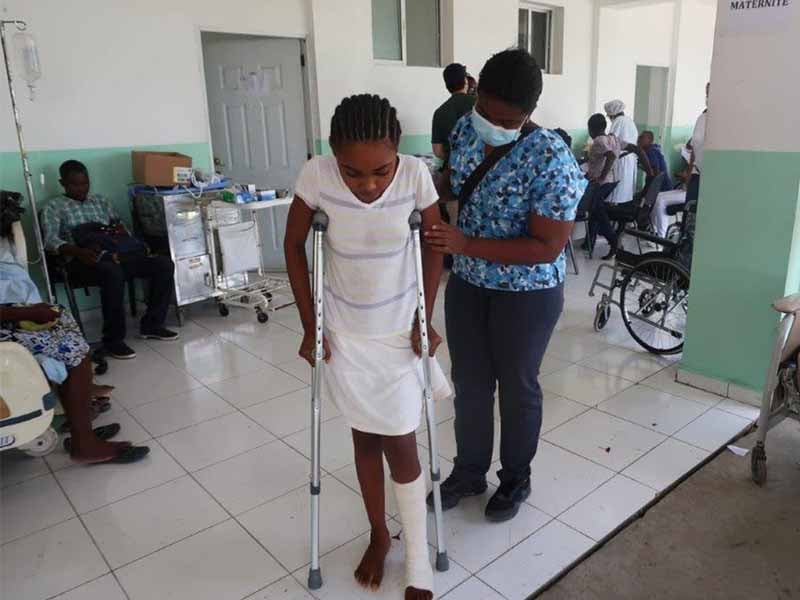
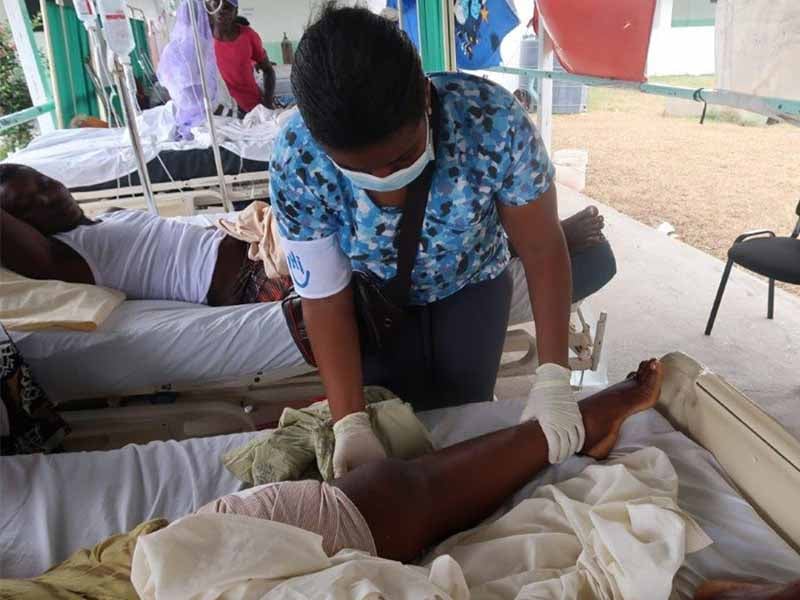
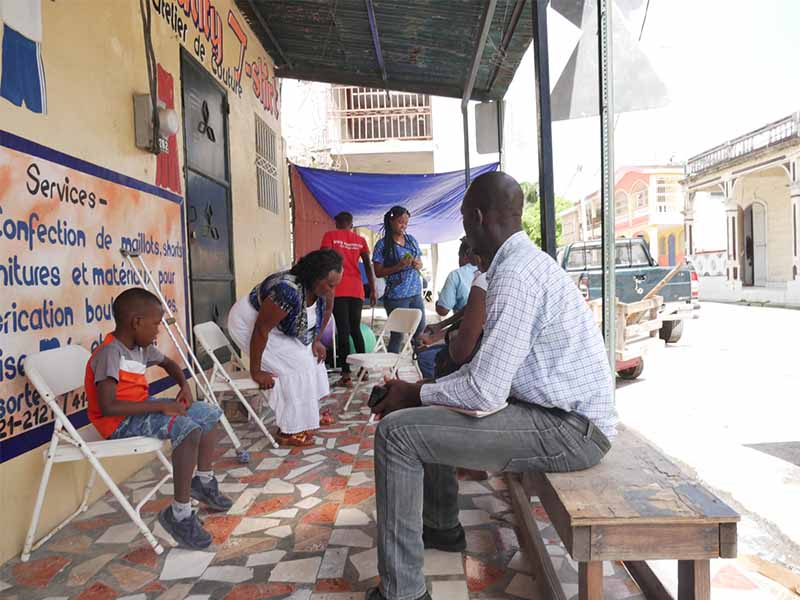
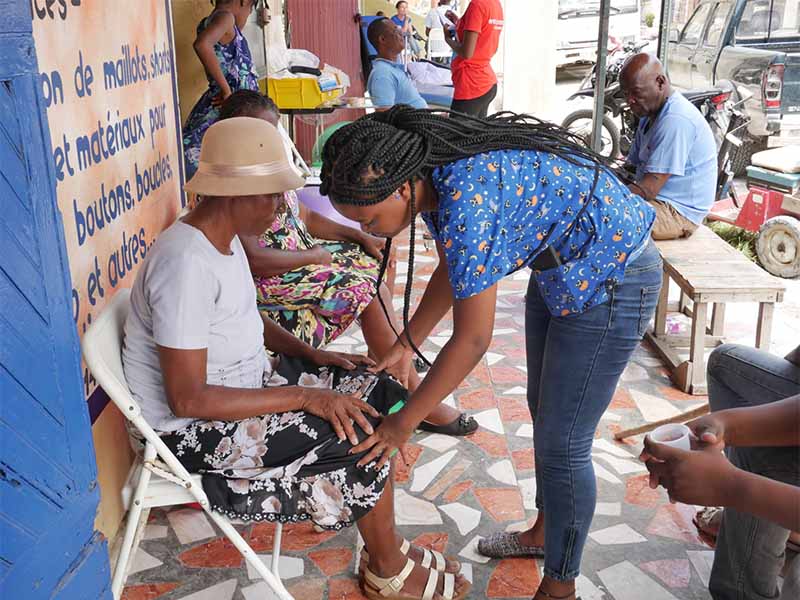
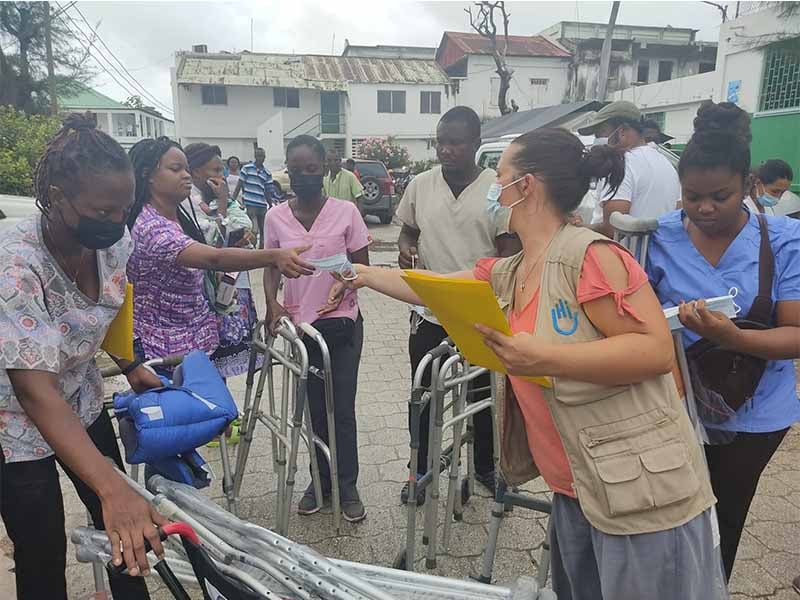
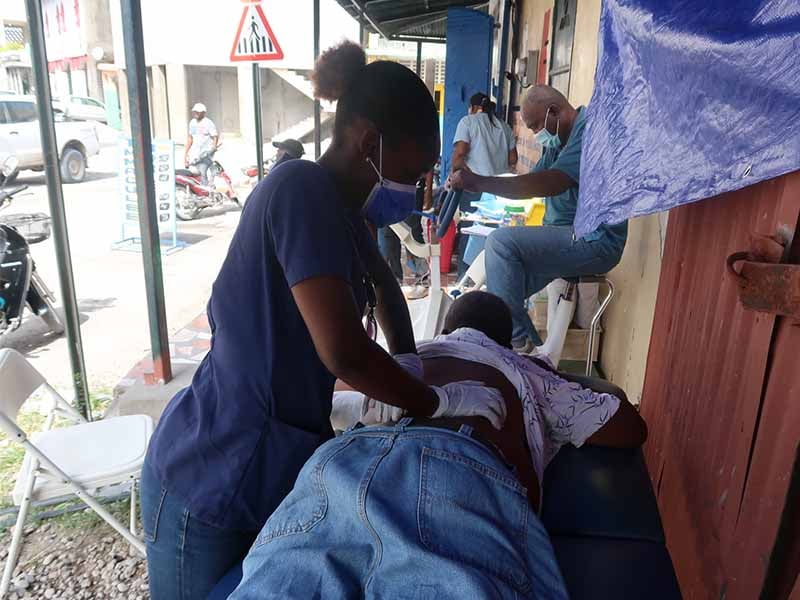
 Latest news from our teams
Latest news from our teams
Read more

HI activates its emergency response in Ukraine
After three weeks of intense armed conflict in Ukraine, the most affected populations remain isolated from humanitarian aid. Humanity & Inclusion prepares its response.

Over 2 million Ukrainian refugees flee armed conflict
Humanity & Inclusion (HI) continues its assessment of humanitarian needs in Ukraine. Refugees live in harsh conditions and vulnerable populations lack accessible information.

Food insecurity threatens families in Ukraine conflict
After weeks of violent conflict in Ukraine, a growing scarcity of essential goods puts more lives at risk.
ABOUT US
Humanity & Inclusion UK
9 Rushworth Street
London
SE1 0RB
UK registered charity no. 1082565




Terms & conditions | Privacy | Cookies
© Humanity & Inclusion UK


